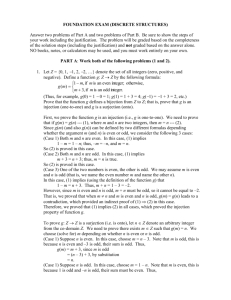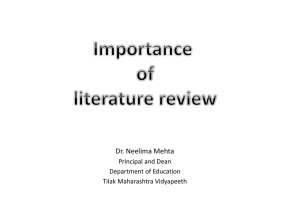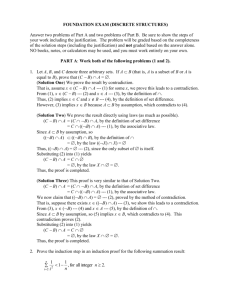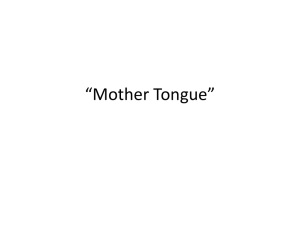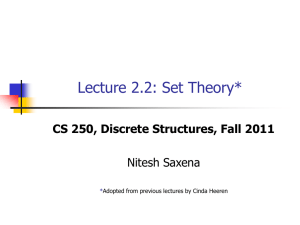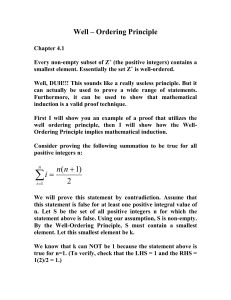Doc
advertisement
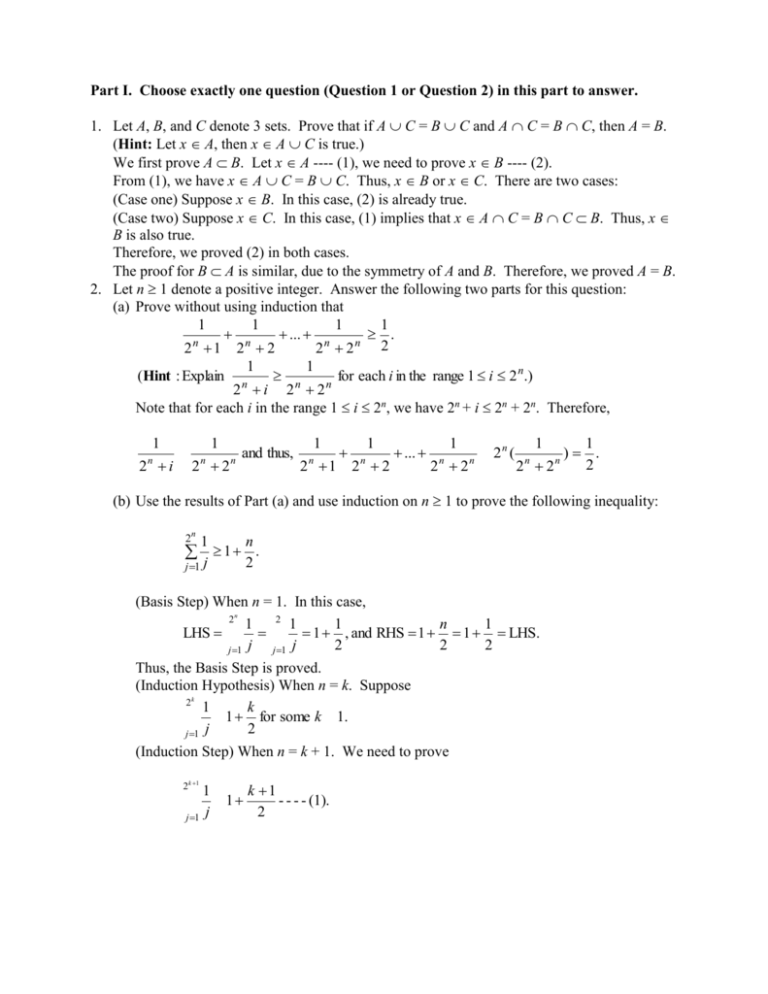
Part I. Choose exactly one question (Question 1 or Question 2) in this part to answer.
1. Let A, B, and C denote 3 sets. Prove that if A C = B C and A C = B C, then A = B.
(Hint: Let x A, then x A C is true.)
We first prove A B. Let x A ---- (1), we need to prove x B ---- (2).
From (1), we have x A C = B C. Thus, x B or x C. There are two cases:
(Case one) Suppose x B. In this case, (2) is already true.
(Case two) Suppose x C. In this case, (1) implies that x A C = B C B. Thus, x
B is also true.
Therefore, we proved (2) in both cases.
The proof for B A is similar, due to the symmetry of A and B. Therefore, we proved A = B.
2. Let n 1 denote a positive integer. Answer the following two parts for this question:
(a) Prove without using induction that
1
1
1
1
...
.
2n 1 2n 2
2n 2n 2
1
1
(Hint : Explain n
n
for each i in the range 1 i 2 n.)
n
2 i 2 2
Note that for each i in the range 1 i 2n, we have 2n + i 2n + 2n. Therefore,
1
2 i
n
1
1
1
1
and thus, n
n
... n
n
2 2
2 1 2 2
2 2n
n
2n (
1
1
) .
n
2
2 2
n
(b) Use the results of Part (a) and use induction on n 1 to prove the following inequality:
2n
1
j 1 j
n
2
1 .
(Basis Step) When n = 1. In this case,
2n
2
1
1
1
n
1
LHS
1 , and RHS 1 1 LHS.
2
2
2
j 1 j
j 1 j
Thus, the Basis Step is proved.
(Induction Hypothesis) When n = k. Suppose
2k
1
k
1 for some k 1.
2
j 1 j
(Induction Step) When n = k + 1. We need to prove
2 k 1
1
j 1 j
1
k 1
- - - - (1).
2
2k
1
Note that LHS of (1)
j 1 j
k
1
2
2 k 1
1
, by t finition of summation
j 2 k 1 j
2 k 1
1
, by the Induction Hypothesis
k
j
j 2 1
k 1
, using the results of Part (a)
2 2
k 1
1
2
1
Therefore, the Induction Step is proved. By induction, we have proved the inequality for
all n 1.
Part II. Choose exactly one question (Question 3 or Question 4) in this part to answer.
3. Let f : A B and g : B C denote two functions. Answer the following two parts for this
question:
(a) If both f and g are injections, then prove the composition function g o f : A C is an
injection.
Let g o f (x) = g o f (y) ---- (1), we need to prove x = y ---- (2).
From (1), g(f(x)) = g(f(y)) ---- (3), by the definition of function composition. Since g is
an injection by assumption, (3) implies f(x) = f(y), which then implies x = y because f is
an injection by assumption. Thus, (2) is proved.
(b) If the function g o f : A C is a surjection, and g is an injection, then prove the function f
is a surjection. (This part is independent of Part (a).)
To prove f: A B is a surjection, let y B ---- (1), then we need to find x A such that
f(x) = y ---- (2). From (1), g(y) C. Because the function g o f : A C is a surjection by
assumption, there exists x A such that g o f (x) = g(y). Therefore, g(f(x)) = g(y) ---- (3).
Since g is an injection by assumption, so (3) implies f(x) = y, which proves (2).
4. Let W, T, and Y denote 3 sets of strings over an alphabet A. Answer the following two parts
for this question:
(a) Prove that (WT)* (WY)* (W(T Y))*.
Since T T Y, so WT W(T Y), which implies (WT)* (W(T Y))* ---- (1).
Similarly, we can prove (WY)* (W(T Y))* ---- (2).
Combining (1) and (2) yields (WT)* (WY)* (W(T Y))*.
(b) Use a “small” example to show that (W(T Y))* (WT)* (WY)* is false.
Let A = {a, b}, W = {}, T = {a}, Y = {b}. Then,
(W(T Y))* = {a, b}* = the set of all strings over symbols a and b.
In particular, the string ab (W(T Y))*.
However, since (WT)* = {a}* and (WY)* = {b}*, we have
(WT)* (WY)* = {a}* {b}*,
thus, ab (WT)* (WY)*. Therefore, (W(T Y))* (WT)* (WY)* is false.
